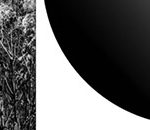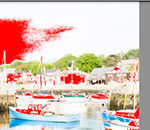This helpful tutorial is part one in an educational series on The Slanted Lens about the laws of light. Photographer Jay P. Morgan covers a variety of photography aspects based on principles taught by Charlie Potts at the Art Center College of Design. Morgan has built upon these lighting laws that he learned 25 years ago and has decided to pass them on to his fellow photographers in a series of useful tutorials:
The laws of light are based on things you cannot change. These are things that occur each and every time a light is turned on. While you can’t get rid of these things, you can control them, and once you master these abilities, you can use them to your advantage.

Examples of everyday objects using the Laws of Light for spheres.
This video is all about one of the most basic lessons of working with light: how to light a sphere. When you place light on a sphere it creates five areas of light:
- Highlight. The highlight is the area lit by up by the light.
- Incident Highlight (ake incident angle). This angle is the direction the light goes off of the subject and to the camera.
- Core. The core is where the transition takes place from light to dark. It’s the area where the shift in lighting begins to take effect.
- Shadow. The shadow is located after the transition has completed itself. It’s on what is considered the shadow side.
- Cast Shadow (aka drop shadow). The cast shadow is a shadow dropped onto the surface of the subject(s) or onto something around it. It’s located on the shadow side of the object, with its exact location, determined by the angle of the light.

The Five Areas of Light
Using the lessons from the video, you can apply them to any spherical subject. Understanding how to light a sphere helps you to control the spill, determine how to use your lighting, and more.
Like This Article?
Don't Miss The Next One!
Join over 100,000 photographers of all experience levels who receive our free photography tips and articles to stay current:






Leave a Reply